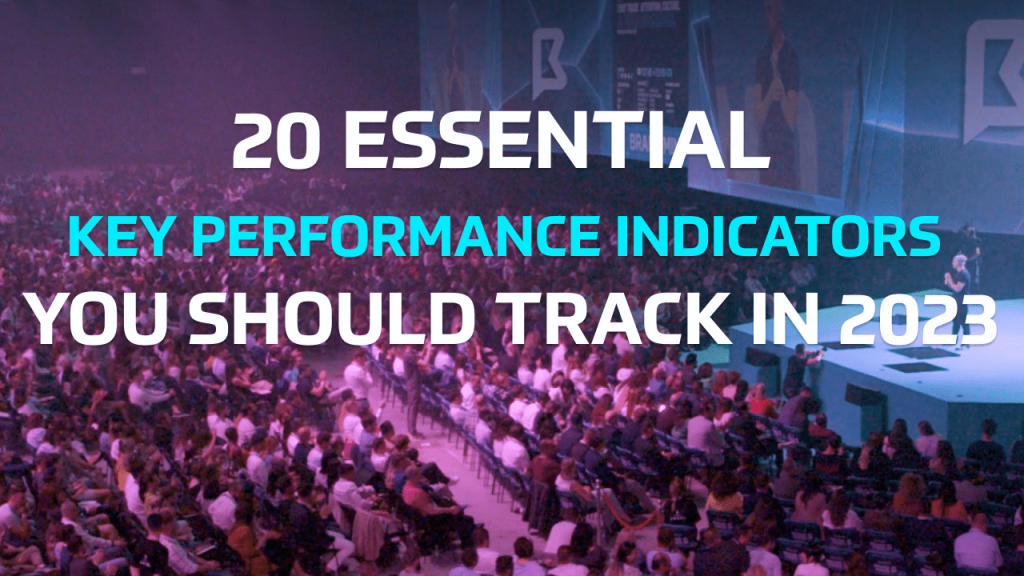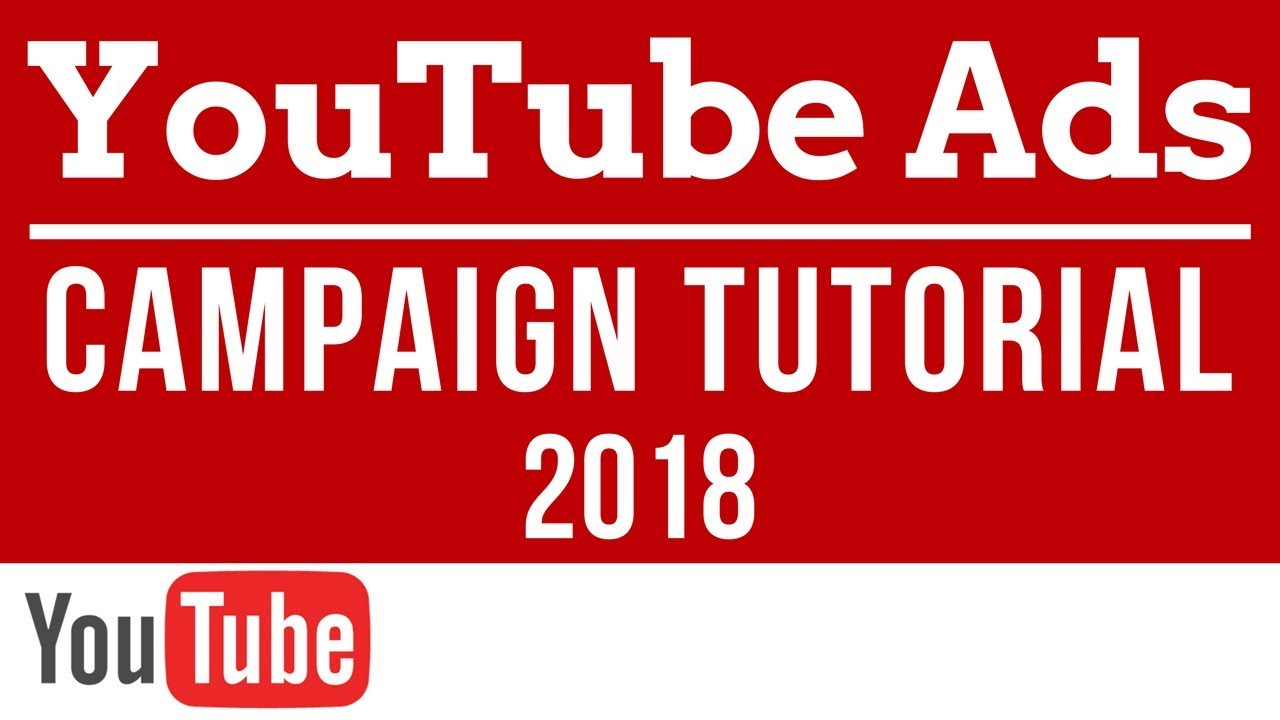20 essential KPIs you should be tracking to improve your marketing
Looking to learn about KPIs and how you can use them to improve your marketing? Then this article is for you!
Table of Contents
What is a KPI in marketing?
KPI stands for key performance indicators.
A KPI in marketing is a measurable value tied to the specific objectives of a marketing campaign.
KPIs help measure marketing effectiveness at the end of a campaign.
KPIs vs marketing metrics
Isn’t KPI the same as marketing metrics?
No, it’s not and you must be able to know the difference between KPIs and marketing metrics.
Marketing metrics are measurable values that include everything from the number of followers of the brand’s page on Facebook, Instagram, YouTube, TikTok to website traffic, email subscribers, MQL (marketing qualified leads) and the list can continue. It’s everything you can measure at any given time.
The KPI belongs to the marketing metrics category, it is indeed a marketing metric itself.
The difference is that the KPIs are tied to a specific goal of a specific marketing campaign whereas marketing metrics are not tied to a specific goal of a specific marketing campaign.
Every marketing campaign has one or several marketing goals. To measure how effective your campaign was to achieve your goals, select the appropriate KPIs.
How are KPIs used to measure performance in marketing?
Before we talk about how to use KPIs to measure and track performance in marketing campaigns, it’s essential to understand the brand’s business goals and objectives.
You cannot measure progress if you don’t know what progress looks like. Or what success means for your business.
So, if you are the leader of your team, share the brand’s business goals for 2021 with your colleagues.
They could focus on revenue (increase sales), suppliers (replace old suppliers with new, more performant ones), employees (reduce employee turnover), profit (increase profit margin) or market (increase market share).
Once everyone in your team is aware of the business goals they need to achieve, you can move on to the next step: establishing marketing goals.
Here are some of the common marketing goals:
- Increase Brand Awareness
- Lead generation
- Promote new products/services
- Target new customers
- Increase website traffic
- Grow your email list
If your business goal is to increase revenue, what marketing campaigns your team needs to create and run in order to achieve it?
You could consider implementing several marketing campaigns. For example, a marketing campaign targeted at new customers or a marketing campaign targeted at your current customers with the goal of upscaling. What would you like them to do: buy more in quantity or buy products that are more expensive?
The KPIs tied to this particular marketing campaign could be 20% new leads generated or 20% customer conversion rate.
Here are 20 essential KPIs that you should track to measure your marketing performance:
- Email open rates
- Email click-through rates
- Email forward rates
- Newsletter signup conversion rate
- Social media engagement rate
- Social media conversions
- New leads generated
- Cost per lead
- Customer lifetime value
- Returning website visitors
- Goal completion rate
- Marketing revenue attribution
- Customer acquisition cost (CAC)
- Landing page conversion rates
- Traffic-to-lead ratio
- Lead-to-customer ratio
- Customer retention
- Content downloads
- Referral traffic
- Net promoter score
1. Email open rates
You worked hard to gain new subscribers to the company’s newsletter, but all is in vain if your emails remain unopened.
Optimize your headlines. Are you sending too many emails per week? If you do, but your subscribers don’t click the unsubscribe button, then they wish to receive your emails but they are too often which leads to email fatigue.
2. Email click-through rates
Your subscribers are opening your emails – that’s great! One of your email campaign goals is to drive website traffic so the email clickthrough rate is an important KPI.
If you note this particular indicator is unsatisfactory (what value did you set for email clickthrough rates?) because the subscribers are not clicking on the links, you should consider the content and the copy. Is the linked content relevant to subscribers?
Re-write the copy: don’t use ‘learn more’ to persuade the subscriber to click the link. Get creative!
3. Email forward rates
The email forward rate is one of the most important KPIs if you are looking to grow a community for the brand.
Opening the email and clicking on the content links inside is one thing, but making your message so relevant to your subscribers that they forward it to someone else is a great achievement.
4. Newsletter signup conversion rate
How many people did your email subscribing campaign convert?
This KPI shows how well you were able to find a match between the brand’s offering and their interests, to speak to their values and show them your solution to their pain points.
5. Social media engagement rate
They say liking a post is the easiest engagement action that your followers can take whereas commenting is the hardest.
Having followers that take the time to express their opinion in a comment to your post is more valuable than receiving likes. It also tells the algorithm that this piece of content is sparking conversations which prompts it to show your post to more people.
6. Social media conversions
It’s nice to have a big number of followers on social media accounts, preferably in the millions. It is an indicator that the brand is popular and a lot of people want to stay connected with the brand.
After having said that, let’s also not forget that the algorithm shows your content to a small number of people. Some say it’s under 1%. So this vanity metric is a nice-to-have feature, but it is not essential.
What is instead relevant is how many conversions does your social content drive? How many clicks to the website? How many email subscribers? How many leads does it generate?
7. New leads generated
Generating new leads is paramount for every brand. You need to constantly show your products or services to new leads gently nudging them to the next step in your marketing and sales funnel.
Check this to get your creative juices flowing: 5 fast ways to generate leads on your website
8. Cost per lead
Lead generation is important, but if the cost of acquiring leads is high, you need to take a step back, analyze every stage of the process and see where you can improve it.
The Pirate Funnel may help you pinpoint where your business is losing customers.
9. Customer lifetime value
Customer lifetime value is the total revenue you can expect from a customer during the period that they remain a customer. Or simply put: how much are they worth to your brand? For example, Amazon Prime members are worth twice as much as non-Prime shoppers. Prime shoppers spend $1,340 annually, more than twice as much as non-Prime shoppers, who spend $650 annually.
10. Returning website visitors
Having a good amount of website traffic is necessary if you want to run ads, show up in organic search results and gain email subscribers.
Your website is owned media, it’s where you control the content – your brand is not at the mercy of any social media algorithms. It’s important to measure the number of new visitors your website gets every month. But equally important is to track how many visitors return to your site.
Returning visitors tell you that your website is a relevant and valuable resource for them. It’s how your brand stays top of mind. It’s also easier to convert returning visitors to leads and then customers.
11. Goal completion rate
Marketers set a goal for every marketing campaign they run. The goal completion rate is a KPI that measures the number of people that complete a specific marketing goal.
How many people subscribed to the brand’s newsletter? How many people have signed up for your freemium offer? It is an important indicator of your brand’s ability to influence to get from the awareness stage to the consideration stage in your marketing funnel.
12. Marketing revenue attribution
Every marketer wants to know how much profit their campaigns have generated. The marketing revenue attribution KPI does exactly that: it tracks and credits the company’s marketing efforts with the generated revenue.
If you are running mobile campaigns, marketing revenue attribution can prove to be a challenge. There are platforms to help you out, it’s only a matter of finding the right one for you.
13. Customer acquisition cost (CAC)
Do you know how much it costs your company to acquire a new customer?
As a business person and a leader, it’s one of the most important numbers you should be aware of. This KPI can be calculated by dividing all costs spent on acquiring new customers (advertising spend, the marketing and sales department salary costs) by the number of customers. Now that you know what your company’s CAC is, if it’s too high, you can start looking for ways to lower it.
14. Landing page conversion rates
Your team has designed a beautiful landing page for your company’s latest offering of products or services. And you are running a campaign to send leads to that landing page with the goal of converting them to customers. The landing page conversion rate KPI shows the performance of the landing page.
If the page has a poor conversion rate, analyze it to see if the graphics and the copy can be improved.
15. Traffic-to-lead ratio
This KPI tells you how many of your website visitors convert to leads. First, you need to establish what exactly means a lead for your brand.
What do you want your website visitor to do? Depending on what your company offers through its website, it could be anything from a newsletter subscribing, downloading a PDF paper, answering a survey or registering for a 7-day free product subscription.
If this ratio is unsatisfactory, one of the main questions you should ask yourself is ‘Are you attracting the right people to your website?’
16. Lead-to-customer ratio
Now that you have established the traffic-to-lead ratio, the next step is to establish the lead-to-customer ratio.
From the total number of leads, how many convert into paying customers? How many push the Buy button? What are you doing to convince them to become customers? Are your leads qualified? A qualified lead is someone who could become a potential customer to you, based on criteria and identifying information that they have freely provided.
17. Customer retention rate
The customer retention rate indicates the brand’s ability to serve and satisfy its customers so well over a given period of time that they have become loyal.
It’s every brand’s dream: customers that are happy to continue to do business. If this KPI is high, then you are doing something right. You may also consider designing a brand ambassador program as your next step. We all know that acquiring new customers is more expensive than retaining existing customers.
18. Content downloads rate
Downloadable content is usually hosted on a landing page as a lead magnet. It helps marketers establish if the content is relevant to the page visitors and if the copy is effective. The visitor who downloaded the content is now a lead and the brand can begin a conversation which could eventually result in a sale.
19. Referral traffic
Directing people to your website is hard work and it usually takes 6 to 12 months to see results for some companies or 3 months for other companies depending on the industry.
Referral traffic is one of those results and describes the people who come to your website from other sites, without searching for your brand on Google. It could be a link on your social media post, or in a blog published by one of your clients. If they are linking back to your website it means your content was helpful to them which in turn helps your brand increase awareness and domain authority.
20. Net promoter score
When we are satisfied with a product or service, we recommend it to our friends and family. It’s one of the most powerful ways a brand can attract customers – word-of-mouth marketing.
The Net Promoter Score assesses the customers’ overall satisfaction and calculates the likelihood of recommending a company or its products.
20 essential KPIs you should be tracking to improve your marketing (updated for 2021) Part 1
Looking to learn about KPIs and how you can use them to improve your marketing? Then this article is for you!
- What is a KPI in marketing?
- KPIs vs marketing metrics
- How are KPIs used to measure performance in marketing?
- 20 examples of essential KPIs for marketing
What is a KPI in marketing?
KPI stands for key performance indicator.
A KPI in marketing is a measurable value tied to specific objectives of a marketing campaign.
KPIs help measure marketing effectiveness at the end of a campaign.
KPIs vs marketing metrics
Isn’t KPI the same as marketing metrics?
No, it’s not and you must be able to know the difference between KPIs and marketing metrics.
Marketing metrics are measurable values that include everything from the number of followers of the brand’s page on Facebook, Instagram, YouTube, TikTok to website traffic, email subscribers, MQL (marketing qualified leads) and the list can continue. It’s everything you can measure at any given time.
The KPI belongs to the marketing metrics category, it is indeed a marketing metric itself.
The difference is that the KPIs are tied to a specific goal of a specific marketing campaign whereas marketing metrics are not tied to a specific goal of a specific marketing campaign.
Every marketing campaign has one or several marketing goals. To measure how effective your campaign was to achieve your goals, select the appropriate KPIs.
How are KPIs used to measure performance in marketing?
Before we talk about how to use KPIs to measure and track performance in marketing campaigns, it’s essential to understand the brand’s business goals and objectives.
You cannot measure progress if you don’t know what progress looks like. Or what success means for your business.
So, if you are the leader of your team, share the brand’s business goals for 2021 with your colleagues.
They could focus on revenue (increase sales), suppliers (replace old suppliers with new, more performant ones), employees (reduce employee turnover), profit (increase profit margin) or market (increase market share).
Once everyone in your team is aware of the business goals they need to achieve, you can move on to the next step: establishing marketing goals.
Here are some of the common marketing goals:
- Increase Brand Awareness
- Lead generation
- Promote new products/services
- Target new customers
- Increase website traffic
- Grow your email list
If your business goal is to increase revenue, what marketing campaigns your team needs to create and run in order to achieve it?
You could consider implementing several marketing campaigns. For example, a marketing campaign targeted at new customers or a marketing campaign targeted at your current customers with the goal of upscaling. What would you like them to do: buy more in quantity or buy products that are more expensive?
The KPIs tied to this particular marketing campaign could be 20% new leads generated or 20% customer conversion rate.
20 examples of essential KPIs for marketing
Here are 20 essential KPIs that you should track to measure your marketing performance:
- Email open rates
- Email click-through rates
- Email forward rates
- Newsletter signup conversion rate
- Social media engagement rate
- Social media conversions
- New leads generated
- Cost per lead
- Customer lifetime value
- Returning website visitors
- Goal completion rate
- Marketing revenue attribution
- Customer acquisition cost (CAC)
- Landing page conversion rates
- Traffic-to-lead ratio
- Lead-to-customer ratio
- Customer retention
- Content downloads
- Referral traffic
- Net promoter score
1. Email open rates
You worked hard to gain new subscribers to the company’s newsletter, but all is in vain if your emails remain unopened. Optimize your headlines. Are you sending too many emails per week? If you do, but your subscribers don’t click the unsubscribe button then they wish to receive your emails but they are too often which leads to fatigue.
2. Email click-through rates
Your subscribers are opening your emails – that’s great! One of your email campaign goals is to drive website traffic so the email clickthrough rate is an important KPI. If you note this particular indicator is unsatisfactory (what value did you set for email clickthrough rates?) because the subscribers are not clicking on the links, you should consider the content and the copy. Is the linked content relevant to subscribers? Re-write the copy: don’t use learn more to persuade the subscriber to click the link. Get creative!
3. Email forward rates
The email forward rate is one of the most important KPIs if you are looking to grow a community for the brand. Opening the email and clicking on the content links inside is one thing, but making your message so relevant to your subscribers that they forward it to someone else is a great achievement.
4. Newsletter signup conversion rate
How many people did your email subscribing campaign convert? This KPI shows how well you were able to find a match between the brand’s offering and their interests, to speak to their values and show them your solution to their pain points.
5. Social media engagement rate
They say liking a post is the easiest engagement action that your followers can take whereas commenting is the hardest. Having followers that take the time to express their opinion in a comment to your post is more valuable than receiving likes. It also tells the algorithm that this piece of content is sparking conversations which prompts it to show your post to more people.
6. Social media conversions
It’s nice to have a big number of followers on social media accounts, preferably in the millions. It is an indicator that the brand is popular and a lot of people want to stay connected with the brand. After having said that, let’s also not forget that the algorithm shows your content to a small number of people. Some say it’s 1% or 2%. So this vanity metric is a nice-to-have feature, but it is not essential. What is instead relevant is how many conversions does your social content drive? How many clicks to website? How many email subscribers? How many leads does it generate?
7. New leads generated
Generating new leads is paramount for every brand. You need to constantly show your products or services to new leads gently nudging them to the next step in your marketing and sales funnel.
8. Cost per lead
Lead generation is important, but if the cost of acquiring leads is high, you need to take a step back, analyze every stage of the process and see where you can improve it. The Pirate Funnel may help you pinpoint where your business is losing customers. Check it out!
9. Customer lifetime value
Customer lifetime value is the total revenue you can expect from a customer during the period that they remain a customer. Or simply put: how much are they worth to your brand? For example, Amazon Prime members are worth twice as much as non-Prime shoppers. Prime shoppers spend $1,340 annually, more than twice as much as non-Prime shoppers, who spend $650 annually.
10. Returning website visitors
Having a good amount of website traffic is necessary if you want to run ads, show up in organic search results and gain email subscribers. Your website is owned media, it’s where you control the content – your brand is not at the mercy of any social media algorithms. It’s important to measure the number of new visitors your website gets every month. But equally important is to track how many visitors return to your site. Returning visitors tell you that your website is a relevant and valuable resource for them. It’s how your brand stays top of mind. It’s also easier to convert returning visitors to leads and then customers.
Join the Conversation
We’d love to hear what you have to say.
Get in touch with us on our LinkedIn Page, Facebook Page, Twitter or TikTok.
5 smart ways to turn website visitors into customers + 1 hot news from Google
Your website is your house. You need to keep it clean, updated with modern appliances, working sanitary fittings and beautiful interior design.
But you didn’t build your website to just sit pretty and look nice. You are working hard to attract traffic in great numbers to your website so you expect it to convert your visitors into customers.
This article will show you 5 smart and creative ways to turn your website visitors into customers plus 1 piece of hot news from Google you will love.
Also we have a bonus for you at the end of the article.
Let’s begin with Google’s latest hot news for website owners and developers!
1. AUGMENTED REALITY FOR WEBSITE PAGES
If you ever played Pokémon Go or used any of Snapchat’s filters you are familiar with Augmented Reality.
Various companies already use Augmented Reality to increase brand engagement and ultimately sales.
Ray-Ban, one of the major players in the optical industry allows its customers to try the full range of sunglasses virtually on their face without visiting their showroom. Their AR-based app is called Virtual Mirror.
Beauty U is an AR-based app launched by Cover Girl, a cosmetics company. The app scans your face using your smartphone’s front camera and applies appropriate cosmetics virtually. This way the app helps you decide which cosmetic products best suit you.
And the list can go on. What is the common thread in these examples? The AR application live outside their company’s website: they are app-based. So you need to build your AR experience with the help of a third-party developer, which can be costly and time-consuming. And then convince your prospects to go to your app and download it. This may require additional advertising costs.
Wouldn’t it be more convenient for your prospects and your company if your AR application was hosted by your own website?
Yes, it would! Up until recently this wasn’t possible.
But Google is working to change that. In June 2018, Google announced the introduction of AR for the web with its WebXR Device API for Chrome Canary. We are not going to go into technical details but you can watch the demo here:
Yes, it’s not something you can go ahead and implement right away, but you can start working on it now and be the first in your industry to delight your website visitors with on-site AR experiences. Remember: the early bird gets the worm!
Now that this is out of the way, let’s talk about other smart ways to turn your website visitors into customers which you can implement right away.
2. CONVERSATIONAL BOTS
Start talking to your visitors while they are on-site
In 2018, marketing is going back to its roots: getting your message across with conversation. Conversational marketing is defined as a one-to-one approach to marketing that companies use to shorten their sales cycle, learn about their customers and create a more human buying experience.
What tools do you need to implement conversational marketing?
Intelligent chatbots!
You can place your chatbots on various pages of your website: high-intent pages, high-traffic pages, pages with negative intent or any other pages that are relevant of your visitor’s buying journey.
Learn more about conversational marketing and how to use conversational bots here:
How to gain more leads with conversational marketing.
Here are three chatbots and the results they yielded for their companies (info via techemergence.com):
- Concierge, the chatbot of Expensify has increased five times the company’s free trials;
- aLVin, the chatbot of LV, a UK-based provider of financial products and services has reduced the volume of calls from broker partners by 91%;
- Mya, the chatbot of FirstJob, an online-based recruiting firm, improved recruiter efficiency by 38% and increased candidate engagement by 150%.
3. CTAs WITH CONTEXTUAL COPY
All CTAs are not created equal
Depending on your industry or niche, your website can have many pages with different products, services or information. Your visitors may land on your pages looking for various information. Then why would you place the same CTA on all your website pages? You wouldn’t want to sound like a parrot going over and over again Polly wants a cracker would you?
Customise your CTAs with contextual copy. Take your time to write well-crafted CTAs that draw visitors’ attention by answering their needs. You know why your visitors landed on a particular webpage so you can take them to the next step on your sales funnel with smart CTAs, which offer a solution to their problems.
How to write effective copy for your CTAs via uberflip.com:
- Make it about your audience, not you;
- Make it emotional;
- Tell them what they lose-it’s psychological: people hate to lose!;
- Make it catchy, smart of funny.
Take your time and write great copy for your CTAs. Test them to see what works and what doesn’t. All your effort will be worth it because great CTAs can increase your conversion rates. Hubspot’s personalized CTAs performed 202% better than untargeted CTAs. Now that’s what I call a great success!
4. USE VALUE LANGUAGE
Tell them what they gain
Let’s say your company is running a webinar and you need to build the event’s landing page. What do you write on the event’s landing page to convert visitors into registrants?
Here are 4 best practices:
- The headline must convey a benefit to the visitor;
- Stay away from benefits that are too broad, be specific on how your webinar can solve your visitor’s problem;
- Tell people what they will learn in the webinar: use bullets to explain key insights that registrants will gain from joining the webinar;
- Tell people what they win and also what they stand to lose if they don’t register to your webinar. Why? Because you are leveraging the loss aversion, a notion supported by behavioural science. This notion states that people are more motivated to avoid losses than they are to acquire gains.
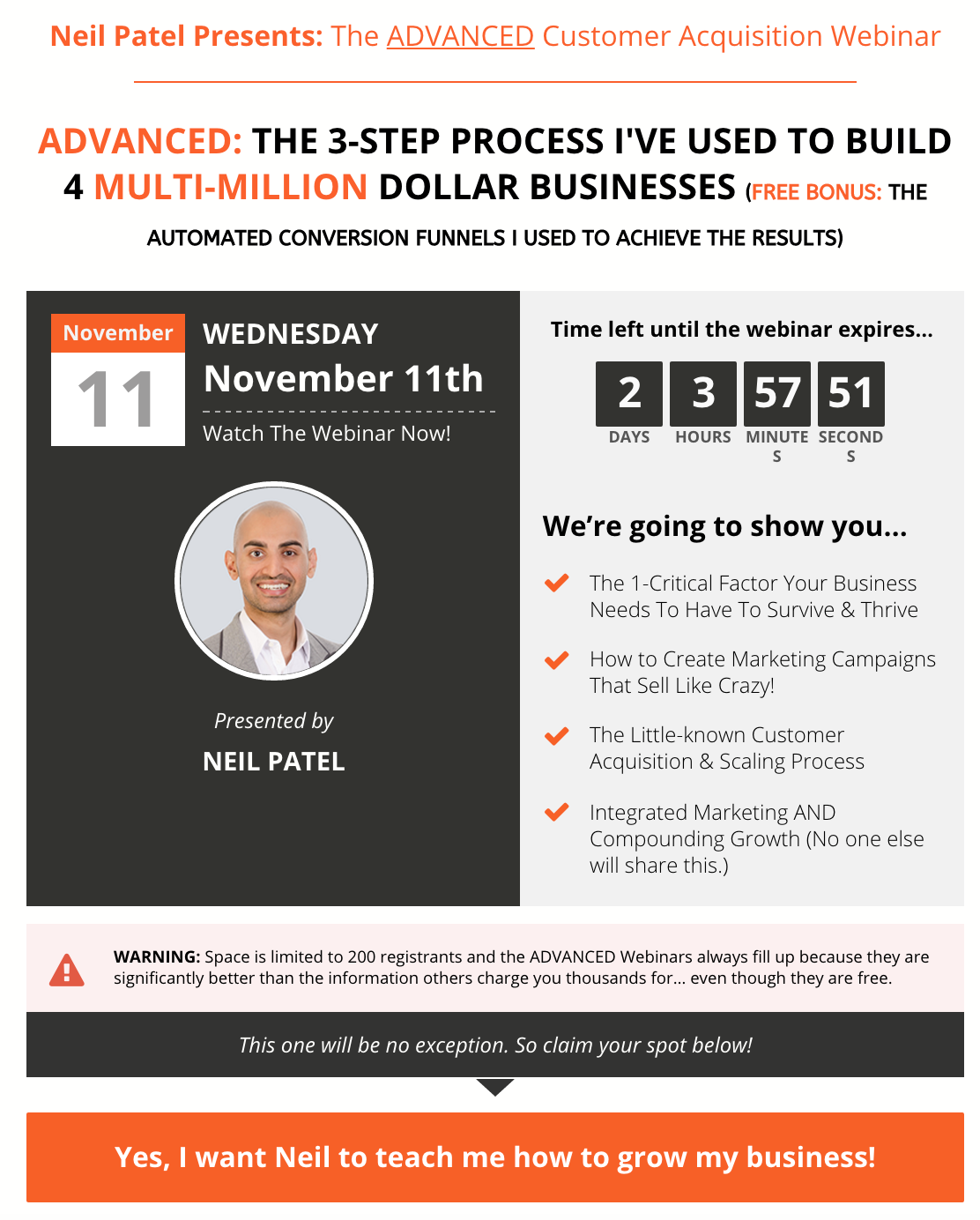
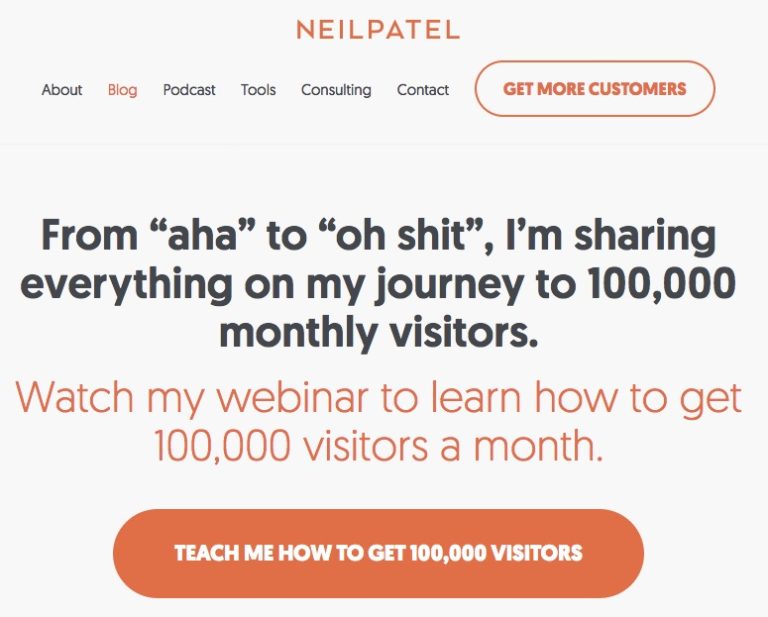
5. CREATIVE EXIT-POPUPs
Don’t let them leave empty-handed
Exit popups are messages triggered by a visitor’s mouse that shows he or she is about to abandon your website. These popups are opportunities for marketers to stop the visitors from leaving the site empty-handed.
In exchange for their email data, marketers can offer products (an eBook, whitepaper, coupon, newsletter, blog subscription, free trial) or discounts. Based on the latest numbers, exit popups can increase conversions by 5-10% when deployed correctly (source: ventureharbour.com).
To stop visitors in their tracks, marketers need to flex their copywriting muscles and come up with a text that draws visitor’s attention.
Here are 3 tips on how to write your exit popup text:
- Be Concise: no one has the time or patience to read entire paragraphs of text so keep it short and sweet;
- Be Funny or entertaining: if it aligns with your brand’s voice, try to find something funny or entertaining to tell to your visitor about to leave your site;
- What’s in it for me? Always show the visitor the value of your offer and how he/she can benefit from it.
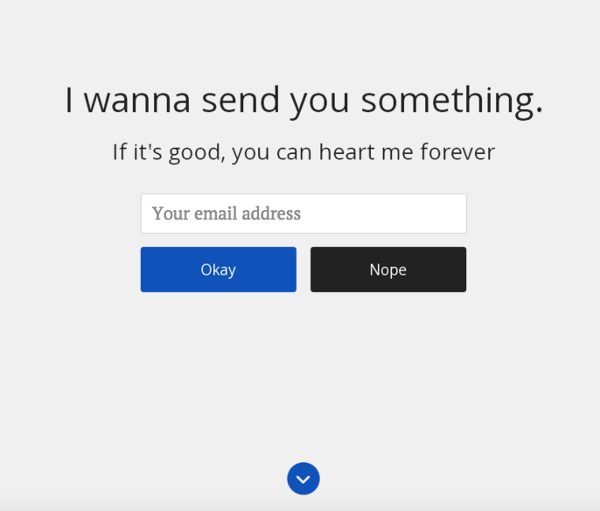
image source: impactbnd.com
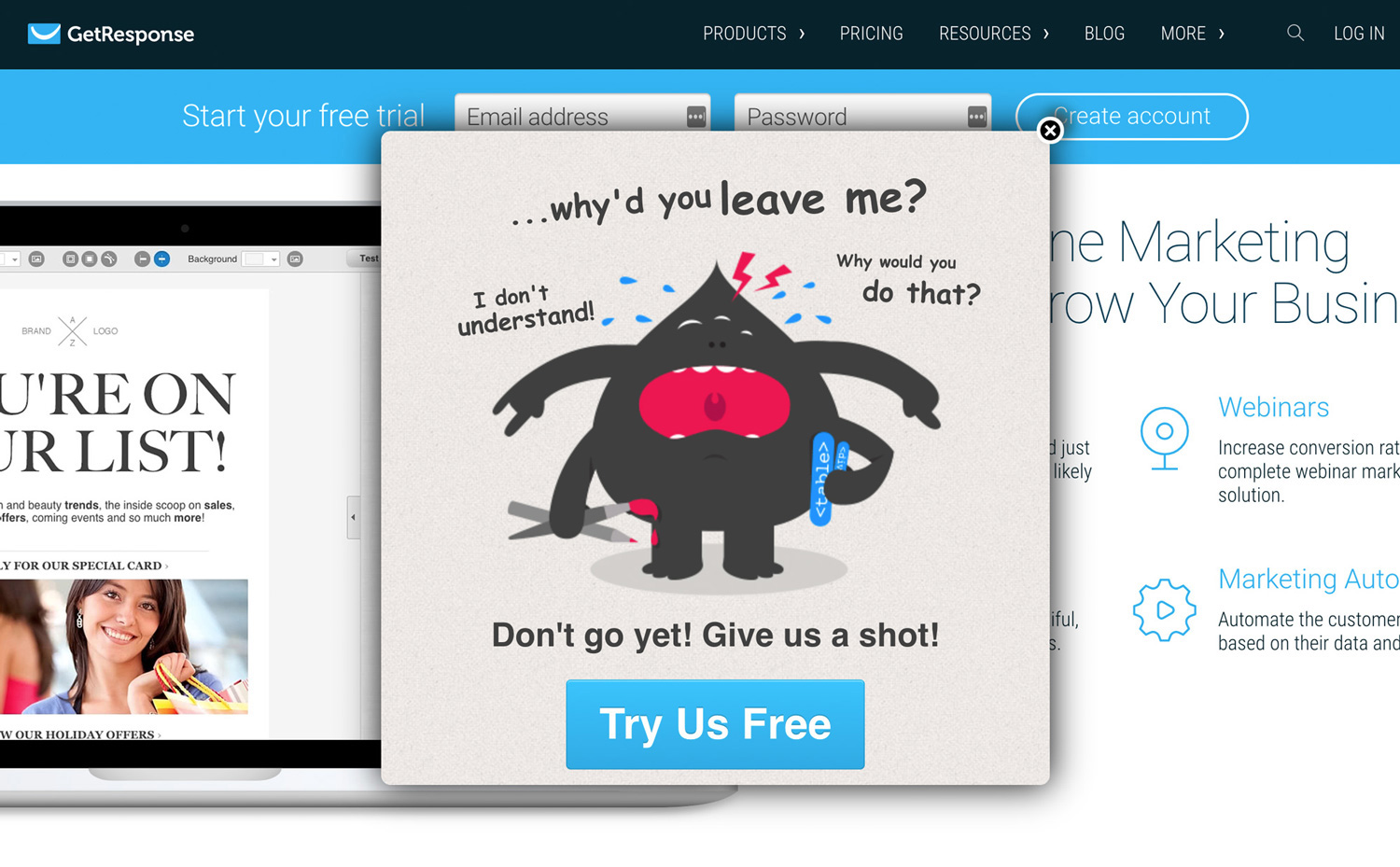 image source: unbounce.com
image source: unbounce.com
BONUS
Remember the bonus mentioned in the first paragraph?
Here it is!
6. LEAD GENERATION TOOLS
See which companies are visiting your website
Are you using lead generation tools?
If you’re not, it’s time you did.
If you are, congratulations!
There are many lead generation tools out there – as a marketer you have options galore. But when you are a B2B company, you need a lead generation tool that will show you which companies are visiting your website. We give you 3 examples of such lead generation tools in our article:
See which companies visit your website.
Let’s say you made your choice and picked the appropriate tool for your company. This tool is providing you with all the info on the companies visiting your website.
What do you do next? How do you turn them into customers?
Here are 3 tips:
- Send them an email that includes resources based on the pages they visited;
- Trigger a live chat conversation to engage them immediately while they’re still on your website;
- Connect with their management on LinkedIn and start the conversation.
Wrapping up
Here are 6 smart ways to turn website visitors into customers:
- Use augmented reality experiences to make a great impression;
- Start talking to them using chatbots;
- Encourage them to take the next step in your marketing funnel by using smart CTAs with great contextual copy;
- Show them how they can benefit by using your product or service and also what they stand to lose – people hate to lose!;
- Use exit popups – Don’t let them leave your website empty-handed!;
- Be informed on who’s visiting your house by using lead-generation tools.
How to use YouTube retargeting and why
According to Search Engine Journal, in 2014, a survey revealed nearly 60% of US Internet users visited YouTube at least once a week.
Re-targeting represents showing ads to an audience that has completed certain actions, such as visited a website, watched a video on YouTube, subscribed to a YouTube channel, or liked a YouTube video. Re-marketing/Re-targeting is a relatively safe and compelling method since the audience/viewers have already expressed interest and been exposed to the product/brand before. It serves to better engage and relate to the audience of your choice. It is also considered one of the most important targeting options in the advertising world.
Therefore, the method can be a really effective way to re-engage with the people who already are familiar with your brand and you can keep your brand in front of people who left your site without converting. For most websites, only about 2% of web traffic converts on the first visit, so it is essential to re-target those lost leads. With re-targeting you can reach the 98% of users who didn’t convert right away on your site. Both Facebook and YouTube have strong re-targeting tools. On YouTube/Google, you can re-target your YouTube viewers with AdWords or your website visitors.
At the same time, with YouTube re-marketing lists, you can re-market to people who have previously interacted with your YouTube channel. Now, you can use these audiences with re-marketing lists for search ads (RLSA).
More insights on the subject you can find here.
